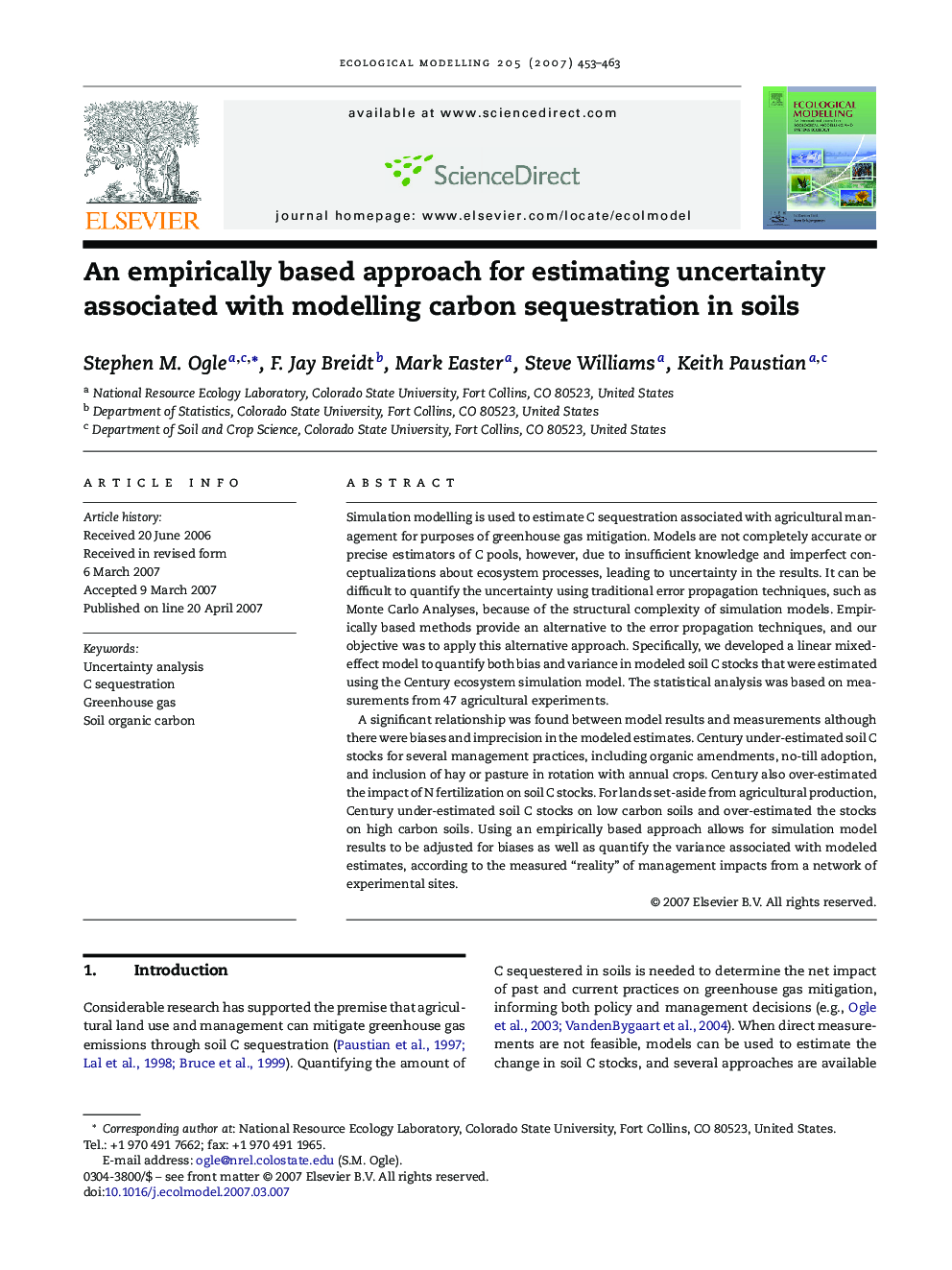| Article ID | Journal | Published Year | Pages | File Type |
|---|---|---|---|---|
| 4378763 | Ecological Modelling | 2007 | 11 Pages |
Simulation modelling is used to estimate C sequestration associated with agricultural management for purposes of greenhouse gas mitigation. Models are not completely accurate or precise estimators of C pools, however, due to insufficient knowledge and imperfect conceptualizations about ecosystem processes, leading to uncertainty in the results. It can be difficult to quantify the uncertainty using traditional error propagation techniques, such as Monte Carlo Analyses, because of the structural complexity of simulation models. Empirically based methods provide an alternative to the error propagation techniques, and our objective was to apply this alternative approach. Specifically, we developed a linear mixed-effect model to quantify both bias and variance in modeled soil C stocks that were estimated using the Century ecosystem simulation model. The statistical analysis was based on measurements from 47 agricultural experiments.A significant relationship was found between model results and measurements although there were biases and imprecision in the modeled estimates. Century under-estimated soil C stocks for several management practices, including organic amendments, no-till adoption, and inclusion of hay or pasture in rotation with annual crops. Century also over-estimated the impact of N fertilization on soil C stocks. For lands set-aside from agricultural production, Century under-estimated soil C stocks on low carbon soils and over-estimated the stocks on high carbon soils. Using an empirically based approach allows for simulation model results to be adjusted for biases as well as quantify the variance associated with modeled estimates, according to the measured “reality” of management impacts from a network of experimental sites.
